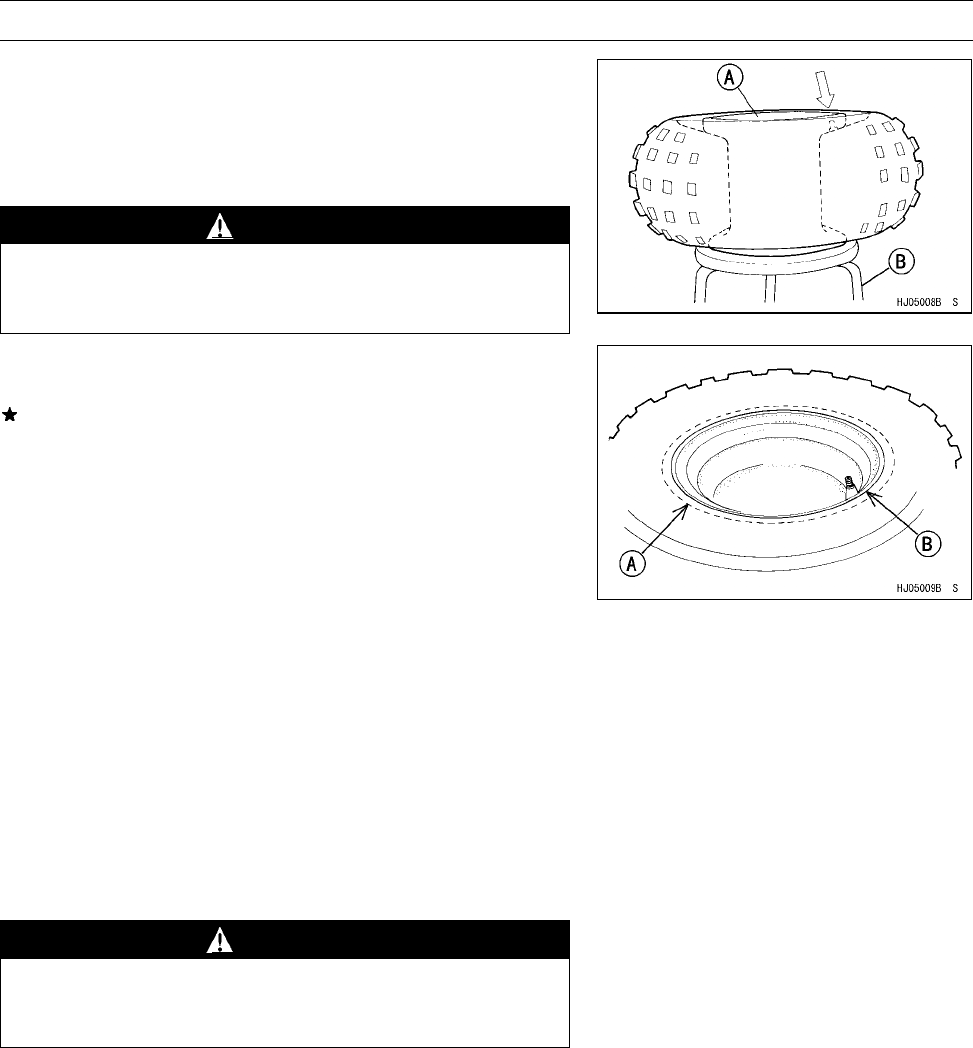
11-12 W HEELS/TIRES
Tires
•
Support the wheel rim [A] on a suitable stand [B] to pre-
vent the tire from slipping off.
•
Inflate the tire until the tire beads seat on the rim.
Maximum Tire Air Pressure (to seat beads when cold)
Front and Rear: 250 kPa (2.5 kgf/cm², 36 psi)
WARNING
Do not inflate the tire to more than the maximum tire
air pressure. Overinflation can explode the tire with
possibility of injury and loss of life.
•
Check to see that rim lines [A] on both sides of the tire are
parallel with the rim flanges [B].
If the rim lines and the rim flanges are not parallel, deflate
the tire, lubricate the sealing surfaces again, and reinflate
the tire.
•
After the beads are properly seated, check for air leaks.
○
Apply a soap and water solution around the tire bead and
check for bubbles.
•
Deflate the tire to the specified pressure.
•
Check the tire pressure using an air pressure gauge.
NOTE
○
Kawasaki provides the air pressure gauge (P/N 52005
-1082) with the owner’s tool kit.
Tire Air Pressure (when cold)
Front: 35 kPa (0.35 kgf/cm², 5.0 psi)
Rear: 35 kPa (0.35 kgf/cm², 5.0 psi)
•
Install the air valve cap.
•
Install the wheel (see Wheel Installation).
•
Wipe off the soap and water solution on t he tire and dry
the tire before operation.
WARNING
Do not operate the vehicle with the water and soap
still around the tire beads. They will cause tire sep-
aration, and a hazardous condition may result.
Tire Inspection
•
Refer to the Tire Inspection in the Periodic Maintenance
chapter.


















